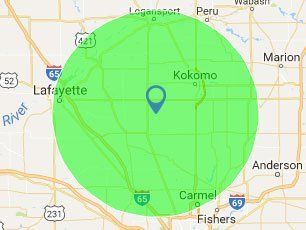Don't Let Pesky Wildlife Invade Your Space
Fox invading your property? The most common complaints include the following:
• Fox living under a deck or shed
• Fox preying on chickens or posing threat to pet
• Fox digging up garden
Fox Species:
The Red Fox (Vulpes vulpes)is a fairly small wild canine. It can vary in color, from orange to gray to silver or black. Fox are omnivorous (eating both plant and animal) animals having a brushy tail and a long narrow snout. There are a total of 37 species of fox with a natural life of about 10 years for almost all of them. They have a smaller build when compared to domestic dogs, wolves and jackals. The male fox, known as Reynards, weigh around 13lbs while the female fox – or Vixens - weigh around 11.5lbs. A male fox can be around 26 to 29 inches in length with a tail length of 16 to 18 inches while a female fox can be around 24 to 27 inches in length with a tail length of 14 to 18 inches.
Fox Behavior:
An interesting thing to note here is that there are different characteristics of fox based on the environment they are living in. A fox living in a desert area has large ears and short fur while a fox living in snowy areas has tiny ears and thicker fur for protection against the harsher elements. Fox live in small families and hunt rodents for their food. They also like consuming grasshoppers and fruits. The grey fox species can actually climb trees. Fox also tend to hide and store their food to help get them through times when food sources are not as readily available. For the northern hemisphere fox, the female gives birth to four to five pups during the spring. The babies are deaf and blind at birth with a coat of fur for insulation. The mother fox stays with them while the father hunts and gathers the food. The cubs start coming out of the den after they are at least four weeks old. It is around this time that they start consuming solid food as well. During the summer, the parents abandon the breeding den and the cubs are taught the skills to gather food. By the time autumn comes, the pups have grown up to full adults and start their own separate life. By the winter season, the young adult fox are ready to mate.
Nuisance Concerns:
Fox are somewhat of scavengers and will therefore eat whatever they can find. They dig in gardens and under homes as well as eating pet food and other leftover garbage that has been left out unsecured. They may attack small pets on occasion. Their loud yelling/screeching can be annoying for residents living close by. They sometimes prey on chicken coops. They also sometimes den under human structures, such as a deck, shed, porch, or crawlspace, and have their pups.
Fox Diseases:
Fox are carriers of rabies. They are carriers of the tape worm parasite which can be transmitted to humans and take up residence in the intestines. They can also cause Sarcoptic Mange which results in the development of rashes in humans.
How to get rid of Fox?
The best method is trapping and removal. Sealing up areas in shed or under porch and home where fox have entered the home and exclude fox with fencing.
Call 765-586-2971 today! We're standing by to help.
We provide emergency
services. Call us at 765-586-2971 now!


